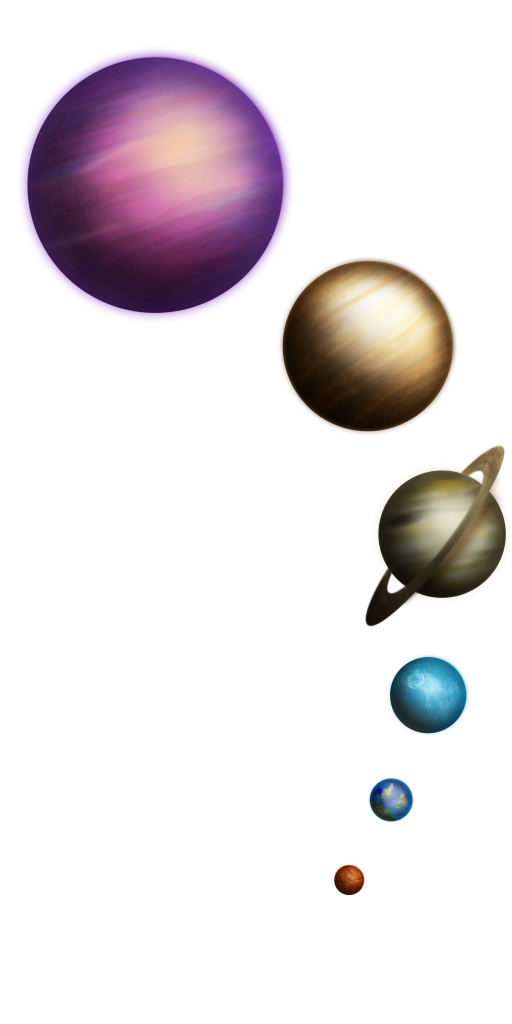JWST: An Eye on Exoplanets

Brett Morris and Clémence Fontanive of the Universität Bern/National Centre of Competence in Research (NCCR) PlanetS (Switzerland) look at how the James Webb Space Telescope (JWST) is set to revolutionise exoplanet research.
Read article in the fully formatted PDF of the Europlanet Magazine.
More than 5,000 planets orbiting distant stars other than the Sun have been found to date, with more being discovered each day. However, we still know relatively little about the properties of these exoplanets or whether Earth and our neighbours in the Solar System are typical or unusual planetary specimens. Now, with its powerful instrumentation and vantage point unhindered by Earth’s atmosphere, JWST offers an opportunity to start building a clearer picture of the ‘planetary zoo’. Exoplanets come in a bewildering variety of sizes, temperatures, and system architectures. Since most current discovery methods are biased towards finding planets that are close-in to their stars, we have found many worlds unlike those in our Solar System. With JWST, we can start to try to understand these exotic planets, such as hot Jupiter-like gas giants that orbit their stars every few hours, or lava-planets – where the scorching temperatures can melt rock. The most numerous types of planet discovered to date fall into the categories of super-Earths and mini-Neptunes, which cover the spectrum of rocky planets more massive than Earth to hydrogen/helium-rich ice giants smaller than Neptune. JWST will also look at mysterious objects called brown dwarfs, which straddle the line between the smallest stars and the biggest planets.
Atmospheric insights
JWST’s instruments will analyse the infrared light reflected and emitted from the surfaces or cloud-tops of planets and brown dwarfs to measure their temperatures. The telescope’s spectrographs will be able to investigate the presence and composition of atmospheres and clouds during transits, where a substellar body (planet or brown dwarf) passes in front of its star along JWST’s line of sight. Starlight filtered through the atmosphere of the transiting body carries the spectral fingerprints of atoms and molecules encountered, and this technique will be used to give new atmospheric insights across the population, from brown dwarfs and hot-Jupiters to mini-Neptunes and super-Earths.
Several JWST programmes will target the famous TRAPPIST-1 system, in which a cool star – hardly larger than Jupiter but 94 times its mass – is orbited by seven Earth-sized planets. The masses and radii of these planets, well-measured by existing missions and ground-based facilities, are strikingly similar to Earth’s. However, the question of whether they have atmospheres has been beyond our capabilities to date, as the spectroscopic imprint of an Earth-like atmosphere would often be partially obscured by clouds and thus very small. JWST may be able to determine whether or not these planets have atmospheres and help to understand whether any or all of the TRAPPIST-1 planets could be considered a ‘true’ analogue for Earth.
By observing light reflected from planets before and after they move behind their star, JWST observations will be able to produce crude temperature maps and weather forecasts of exoplanets – something that is very difficult to do from the ground. Although the temperature uncertainties will be tens or hundreds of degrees, this is still precise enough to reveal a wealth of information on chemical processes and climates occurring in a planet’s atmosphere.
When a gas giant or brown dwarf orbits far enough away from its host star, we can sometimes obtain pictures of the body itself. JWST’s powerful spectroscopic capabilities combined with coronagraphs, which block the overwhelming glare of the star, will enable it to capture light emitted directly by the body’s thermal radiation in the infrared. In particular, a dedicated Early Release Science programme will allow astronomers to study the formation and atmospheric structure and dynamics of some known large-separation substellar bodies in more detail than has ever been possible to date.
Rogue wanderers
The lightest and coldest brown dwarfs are similar in many ways to giant planets like Jupiter. Though they are sometimes found orbiting stars, many wander through space with no parent star, as can some planets. Such star-less bodies are described as “rogue”. Pushing the limits of what has been detectable until now, some JWST General Observers programmes will attempt to uncover new rogue planets and brown dwarfs, either in isolation or as companions to more massive brown dwarfs.
As JWST begins operations, we look forward to seeing it excel at the complicated game of exoplanet observation and enlighten our knowledge of star, brown dwarf and planet formation processes.


